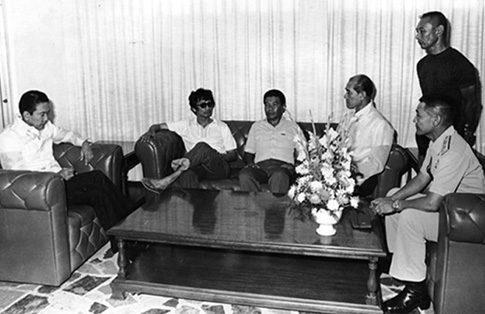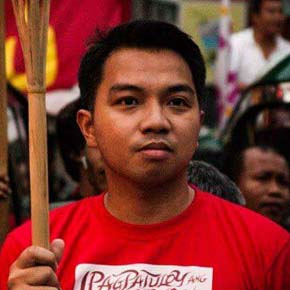Yet KM recently celebrated its 50th founding year. Some of its members staged lightning rallies in Manila, some chapters released an anniversary statement, and some former activists from the 1980s and 1990s gave testimonies about the influence of KM on their lives.
” …the KM perspective continues to represent a new type of politics. It is not because KM has stubbornly refused to embrace change, but because the general conditions of the present have remained unchanged since the 1960s… “
KM is many things to different people but at least it has a sense of history. It was founded on November 30, Bonifacio Day, to herald the continuity of the 1896 Philippine Revolution. Some have derided the KM for copying the so-called destructive politics of China’s Red Guards. But China’s Cultural Revolution was launched in 1966 while KM was founded two years earlier. It is true that KM members have consistently propagated the teachings of Mao Zedong but they saw themselves from the very beginning as heirs of the Katipunan legacy. The KM is both Katipunero and Red Guard.
“Even before martial law was declared, KM members were encouraged to serve the people, integrate with the masses in the countryside, and join the agrarian revolution”

KM founder Jose Maria Sison presented to President Marcos by his captors. Photo from Pinoy Weekly
Some looked down on KM leaders who became the pioneer cadres of the Communist Party and New People’s Army. But the CPP-NPA was the core of the resistance movement during martial law in the 1970s. The KM was also one of the underground groups which established the National Democratic Front. In a different context, KM was the original proponent of the government’s ‘balik-probinsiya’ (back to the province) program. Even before martial law was declared, KM members were encouraged to serve the people, integrate with the masses in the countryside, and join the agrarian revolution. Many tirelessly worked to create grassroots formations across the archipelago. Most of these initiatives became leading NGOs and people’s organizations that promoted the welfare of the poor and marginalized. There is probably a KM member behind every anti-Marcos NGO that bloomed in the 1970s and 1980s.
Anti-communists can ignore the preceding paragraph but the KM will remain a remarkable political group. No serious student of Philippine politics and history can disregard KM and the “discontents” it caused in semi-feudal and semi-colonial Philippines. No youth group can claim to discover a more radical way of changing the world without first debunking the political legacy of KM.
Highlights of the stage production “Kabataang Makabayan, Paglingkuran ang Sambayanan” (Patriotic Youth, Serve the People) in celebration of the 50th anniversary of KM
The problem with KM is that it set a very high standard for young people who wanted to take part in politics. Before KM, young people were told to do charity or to campaign for good-hearted politicians. Nothing wrong with these prescriptions but KM argued that young people are capable of doing greater things for the country and more meaningful actions for the poor such as fighting landlordism, foreign meddling, and systemic corruption in government. Before KM, young people were able to articulate these issues in the government by joining elite-controlled parties or serving at the pleasure of dynasties. But after KM, the youth were able to speak out and assert their rights through various collective actions.
“It was KM which forcefully emphasized that a youth movement obsessed with prettifying the useless bits of reforms introduced by the reactionary state is complicit in preserving the unequal present.”
However, the reformist outlook and practice that dominated the politics of KB and SK still lingers. This is evident in the pronouncements of young trapos, government-backed youth parties, and conservative civic groups. How they clamor for youth representation in all working committees of the state (as if it is the central aim of politics), how they masterfully mimic the idiotic and deceptive language of their elder trapos, how they exaggerate symbolic gestures as great acts of politics, how they pitifully cling to the perks and trappings of the bureaucracy, how they uncritically support the reactionaries in waging war against the progressives, how they peddle illusory hope when the situation demands the overhaul of the beastly machine.
“No other youth group has done what KM achieved in the past half century”

Mong Palatino is an activist, former youth legislator and currently Chairman of BAYAN-Metro Manila
Photo below by Tudla Productions






































